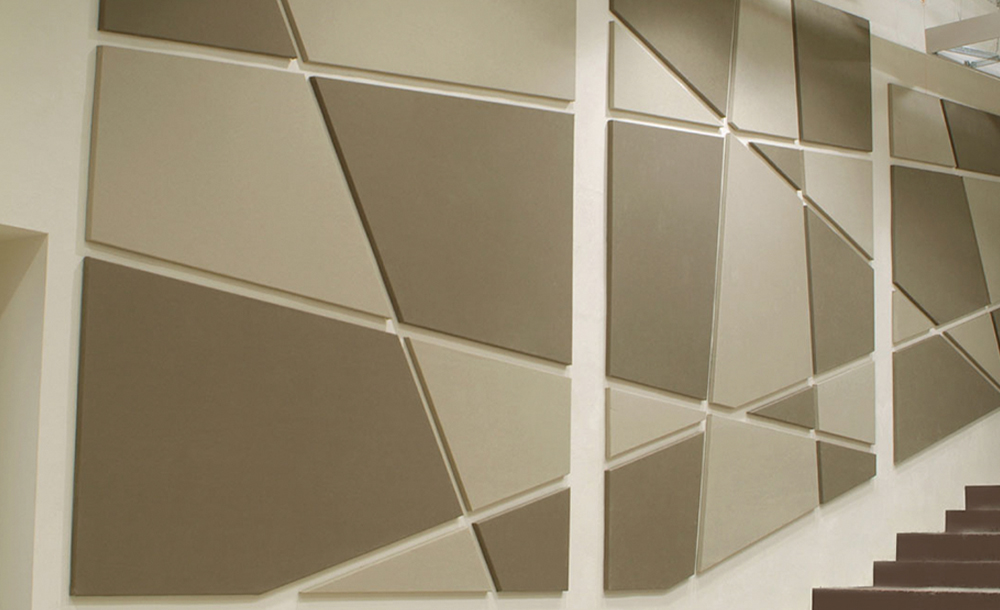X

Acoustic wall panels are highly effective at controlling reverberation and unwanted noise reflections. With an almost infinite selection of sizes, shapes, and finishes, they can be seamlessly integrated into any space.
Acoustic wall panels are used primarily for controlling sound in a space in order to comprehend what is being communicated, whether speech, audio reproduction, or live performance. This could be a factory where safety paging needs to be heard, a call center where cross talk between phone operators is an issue, or a recording studio where a predictable outcome is necessary so that playback is consistent across other audio systems.
One of the biggest misconceptions of acoustic absorption materials is that they will block sound. Absorption materials are only used to tone down a space by treating the hard reflective surfaces thereby reducing reverberation; they will not stop sound energy from passing though them, this requires sound blocking products.
When an initial or direct sound is created, reflections occur as the sound bounces off nearby walls arriving a few moments after the direct sound, making speech intelligibility difficult. The amount of time it takes for these secondary reflections to dissipate is called the reverberation decay time.
The further two parallel surfaces are apart, the longer the decay time. If you clap your hands in an empty room, you will hear the sound ricocheting off the walls, ceiling, and floor. This is called flutter echo and is caused by hard parallel surfaces in the room allowing the echo to sustain itself. Reducing reverberation time is a matter of increasing the amount of absorption material in the room through the use of acoustic absorption panels. The more panels you add, the more sound energy will be absorbed.
Used to control reverberation time or harsh reflections, introducing comfortable communications within a space.
Variety of core materials and face materials can be combined to create long-lasting absorption systems that can withstand a variety of climates.
Metal, wood, fabric, PET, and custom printing ensure acoustic panels look great in any space.
Our panels are lightweight, easy to install, and are Class A Fire Rated. OELEX fabric wrapped acoustic wall panels are manufactured in nine different models to meet different design requirements. They are the ideal solution to control reverberant noise problems in spaces where aesthetics is important. Fabric wrapped acoustic panels are available in a large variety of acoustically transparent fabrics, as well as colors and finishes to enhance any interior décor. Customer supplied fabric can also be used when tested and approved by the factory.
As experts in acoustic design, we can help develop an effective, comfortable, and aesthetically pleasing acoustic solution that helps your organization improve the quality and productivity of time spent in your facility.
Our project managers will work with you to assess your noise control needs. With a keen focus on delivering a turn-key solution, we can help design an acoustic package to solve any noise issue.